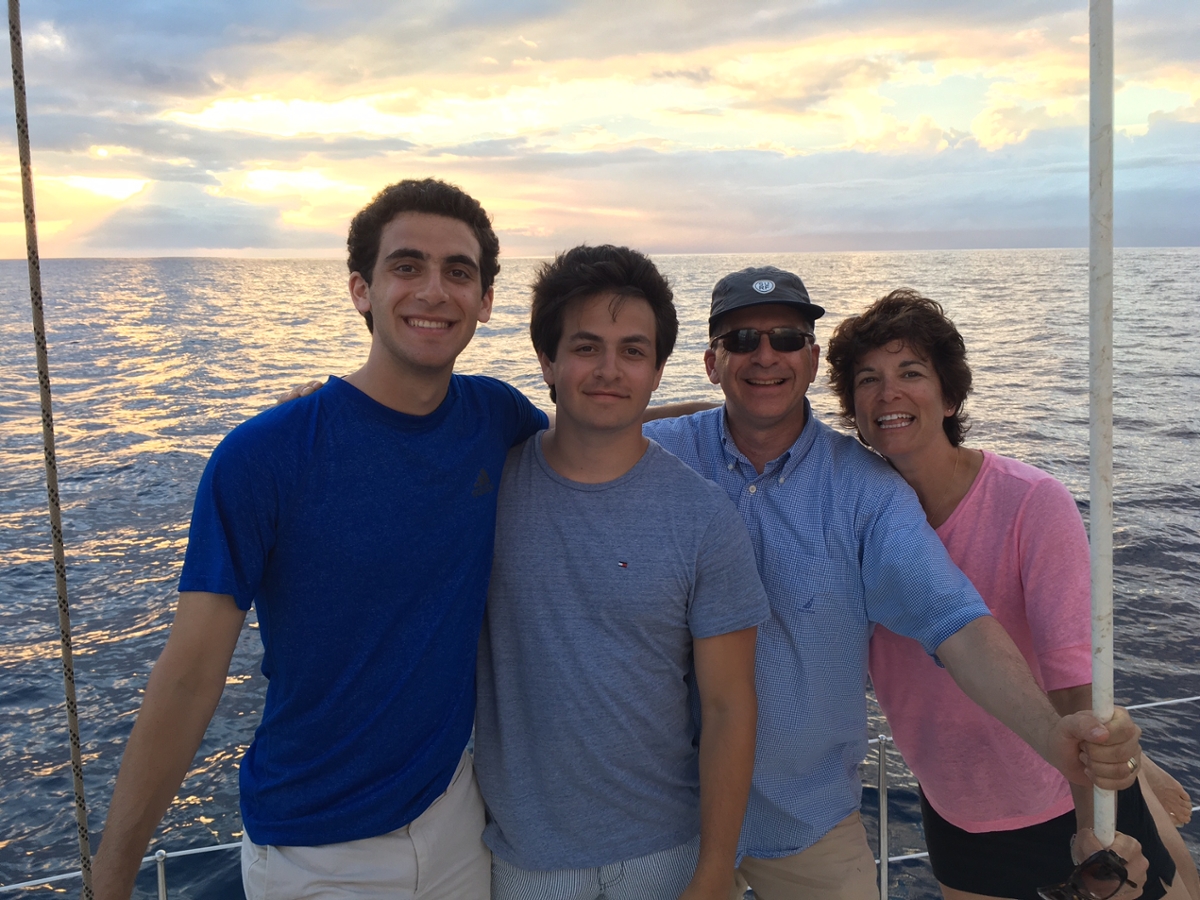
New MS Chair looking forward to his role
Dr. Levin just moved to Canada to take up the position of the new Saskatchewan Multiple Sclerosis Clinical Research Chair, and he's looking forward to the transition
By Marg SheridanOne of the great things about medical schools, and medical research in general, is that it’s an international community.
And recently the College of Medicine was happy to have an important member of that international community move to Saskatoon to take on the role of our new Saskatchewan Multiple Sclerosis Clinical Research Chair.
Dr. Michael Levin made the move from Memphis, Tennessee, where he was a professor of neurology at the University of Tennessee Health Sciences Center and chief of neurology at the Veterans Affairs Medical Center (Memphis) in March with his wife, Audrey. The pair have since started the task of settling into the city, and country, they’ll be calling home for the next seven years.
How was the move?
We brought our 13-year-old golden retriever and drove her 1750 miles through Memphis, St. Louis, North Dakota, Regina and here - she really did enjoy it!
There are a lot of things to do (when you move), and a thousand little nuances of life you take for granted when you’re in a new country such as “where’s the post office and how does it work?”
Have you ever worked for a Canadian institution before?
I’ve never worked in Canada before, though we both have an affection for Canada because we’ve skied in various resorts around the country and have always enjoyed visiting, and enjoyed the people.
It’s a big move, and a big change in climate, and a big change in culture. And it’s learning a new medical system, a new university system - but still I’m up for the challenge! It’s extraordinarily exciting, and an opportunity of a lifetime. It’s absolutely thrilling to be able to engage the community, and have a community that’s so interested in MS – as a physician, clinician and clinical scientist, to be able to study this population is really an opportunity of a lifetime, and I’ve been working in the field for more than 20 years.
What had you heard about Saskatoon then, we’re not exactly known for our skiing…
The message I’m getting is that it’s cold, but bright. A friend of mine from Wyoming said ‘get an outdoor hobby in the winter’ because otherwise you’ll go stir-crazy. And I understand ballroom dancing is big, and Audrey and I, are looking forward to that.
I definitely want to visit North Saskatchewan, I’ve heard it’s really beautiful there, it’s one of the first things we want to do.
So what attracted you to the MS Chair position?
I think there are a lot of things that attracted me to the position.
One is again one of the highest incidences of MS in the world. And two, the people. There’s a really community-based need and the community and people are engaged. There really is a decent amount of infrastructure here already - there’s an up-and-running clinic at the City Hospital, run by Drs. Poliakov and Knox, and there’s MS rehab there, so that’s two crucial components. There is also the basic laboratory piece, led by Dr. Valerie Verge. Director of the CAMECO MS Neuroscience Centre, which remarkably, is also at the Saskatoon City Hospital.
You have all those components under one roof, which is appealing, (but) there’s still great potential for collaboration and growth.
Why did you get into neuroscience, and MS research in particular?
I have a very strong neuroscience background – I’ve always been interested in the neurosciences, and am a neurologist. Broadly I knew I wanted to get into academic medicine, not just clinical medicine. Then in the early 1990’s, I met a couple of MS patients at the hospital - they were always strikingly young, intelligent and mid-career. So watching them become disabled was disturbing, and at that time there were no FDA approved medications to treat MS.
So, what are your first steps?
The first step will be to write grants! The number one task is to get the lab up and running – so grant writing and hiring. Concurrently, I think a big part of my job is to engage the community and be accessible to the community. The clinic where I will be seeing patients is already up and running. We have a nurse and an administrative lead. We will be adding a second nurse and a nurse practitioner and we’ll slowly scale up over the next year.
The vision is clear, so as a research chair I think one of my major responsibilities is to encourage people to collaborate, and create an MS centre of research with the potential to have a reputation for excellence, regionally, nationally and internationally.
